MINBAR burst interface visualisation
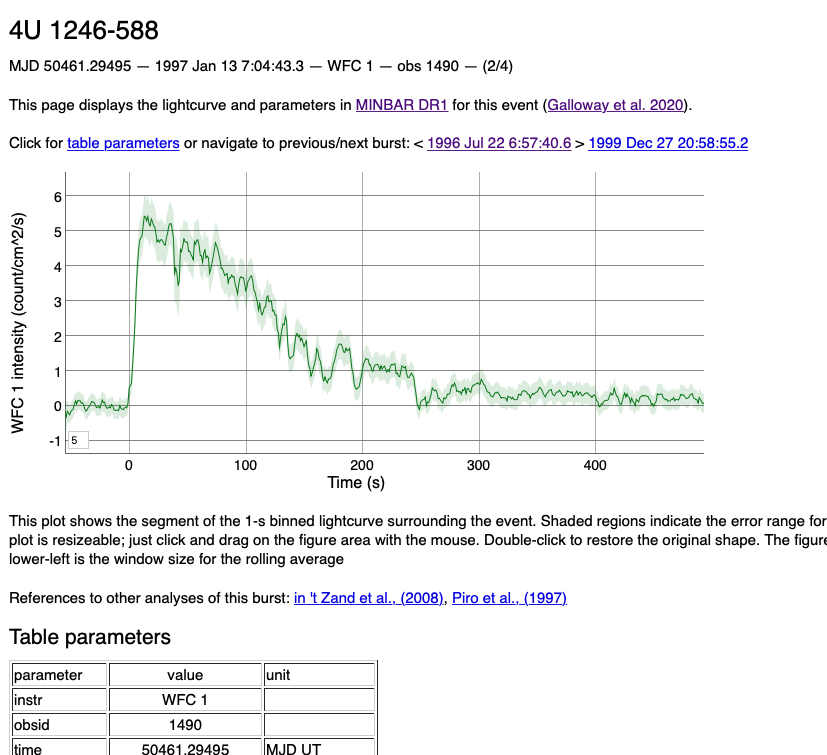 The web interface to the MINBAR
burst sample is the result of a collaboration with the
Monash
eResearch Centre. The interface offers data selection and filtering tools,
as well as output as ASCII for offline analysis and basic plotting.
The web interface to the MINBAR
burst sample is the result of a collaboration with the
Monash
eResearch Centre. The interface offers data selection and filtering tools,
as well as output as ASCII for offline analysis and basic plotting.
We'd always envisaged offering more visualisation capabilities, but had not managed to implement them, until now. When you search the burst interface, you'll see a "wiki" link for each entry. Clicking on this link will bring up a page listing all the analysis results for this event, along with a dynamic plot of the burst lightcurve, and link to the time-resolved spectroscopy (where available). Click here (#2582) for a beautiful example from GX 17+2.
The same lightcurve files are now also accessible via the Python repository, using the get_lc method. We're also working on a method to return the time-resolved spectroscopy.
Labels: 2021, /thermonuclear bursts


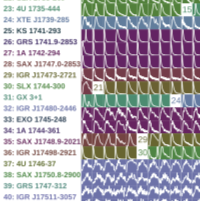 In late February we submitted the paper describing data release 1 (DR1) of the
In late February we submitted the paper describing data release 1 (DR1) of the
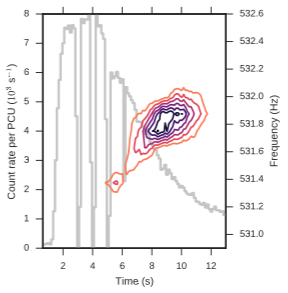 The legacy of NASA's
The legacy of NASA's 
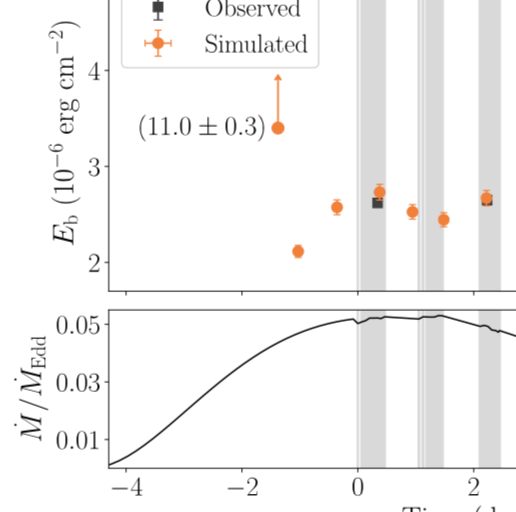
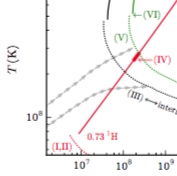
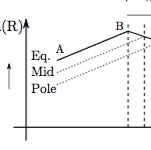 It's been a long-standing mystery, how for some burst sources, the burst rate
decreases even as the accretion rate increases. Theory
and numerical models both predict that as you dial up the accretion rate,
the burst ignition point should be reached earlier and earlier (up to the
point when burning becomes stable and bursts stop), so that the burst rate
should always increase.
It's been a long-standing mystery, how for some burst sources, the burst rate
decreases even as the accretion rate increases. Theory
and numerical models both predict that as you dial up the accretion rate,
the burst ignition point should be reached earlier and earlier (up to the
point when burning becomes stable and bursts stop), so that the burst rate
should always increase. 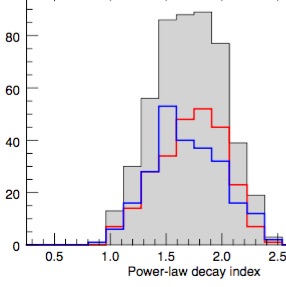 When the upper layer of an accreting neutron star experiences a thermonuclear
runaway of helium and hydrogen, it exhibits an X-ray burst with a
cool-down phase of typically 1 minute.
Analysis of light curves of 1254
X-ray bursts observed by the
When the upper layer of an accreting neutron star experiences a thermonuclear
runaway of helium and hydrogen, it exhibits an X-ray burst with a
cool-down phase of typically 1 minute.
Analysis of light curves of 1254
X-ray bursts observed by the


